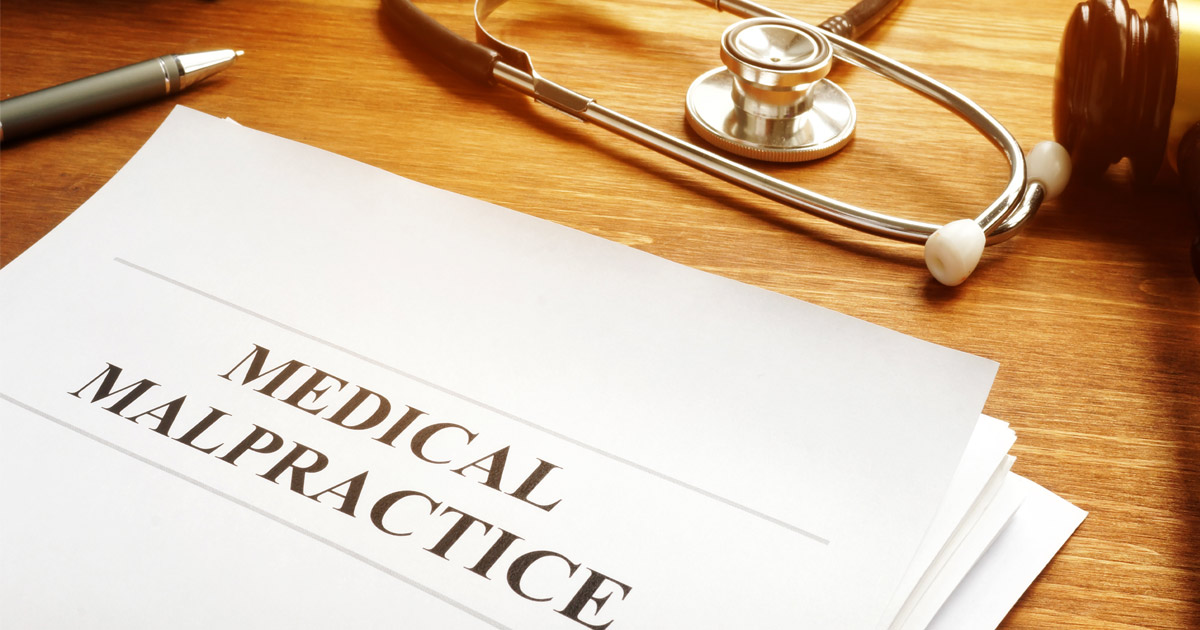When a health care provider makes a mistake, it could lead to disastrous consequences. You trust them with your health and expect them to treat you for your injuries or illnesses. Unfortunately, mistakes do happen, but even so, negligent doctors and other health care providers should be held accountable. When a medical mistake happens to you or your family, you may be able to file a medical malpractice claim.
Some medical malpractice claims happen more often than others, resulting in further harm, injury, or even death. In fact, according to an eight-year long study by Johns Hopkins University, about 10 percent of all fatalities in the United States are due to medical malpractice.
To file a medical malpractice claim, your lawyer needs to prove the doctor or provider was negligent and did not uphold their professional duty in treating you. The following are the most common types of medical malpractice claims.
Misdiagnosis
According to Modern Health, about one-third of medical malpractice claims are either an incorrect diagnosis or a delayed diagnosis. A misdiagnosis or delayed diagnosis can result in untimely treatments or even unnecessary treatments. This could lead to a worsening medical condition or a delay in the right treatment.
A misdiagnosis occurs when a physician fails to order the right testing or fails to refer the patient to the right specialist, or they even miss clinical signs or symptoms. Other times, a health care worker could lose test results, misinterpret test results, or incorrectly evaluate data.
Childbirth Injuries
Childbirth is difficult and many complications may arise for both the mother and the baby. If a doctor or the mother’s care team is negligent in any way, the life and health of both mom and baby are in danger. In fact, studies show that birth injuries can occur with six to eight infants for every 1,000 births.
A doctor could fail to correctly monitor the vital signs of both mother and infant or mistakenly handle a C-section surgery. Doctors may also misdiagnose a medical condition for both mother or child, resulting in injuries and birth defects. Common birth injuries include:
- Brain damage
- Bell’s palsy
- Cerebral palsy
- Death
- Erb’s palsy
- Hypoxia
- Shoulder dystocia
- Spinal cord injuries
Failure to Treat
According to the Western Journal of Emergency Medicine, failure to treat claims are when a provider violates the standards of care they accepted when becoming a medical professional. Examples of a failure to treat claim include failing to provide instructions for proper care, releasing a patient too soon in their recovery, failing to order the proper tests, or neglecting a patient’s medical history when providing treatment or prescribing medication. All these examples can lead to a health condition worsening or the patient suffering an additional health issue.
Medication Errors
Mistakes with a patient’s medication can have harmful, sometimes deadly results. A doctor may prescribe an incorrect drug or prescribe an incorrect dosage, or a pharmacist fills your script with the wrong drug. A nurse may even administer the wrong drug or give the wrong dose. There are times when a patient’s allergies may be ignored and have a dangerous allergic reaction to the wrong drug.
Surgical Errors
Many medical malpractice claims come from surgical errors each year, making them the second most common. Surgical errors can come in different forms, such as:
- Surgery on wrong body part.
- Surgery on wrong patient.
- Incorrect surgery for patient.
- Failure to sterilize surgical equipment, causing an infection.
- Leaving surgical equipment inside the body, or failing to perform proper inventory of surgical equipment post-surgery.
Errors can also be made when administering anesthesia. Anesthesia is used before surgery to prevent the patient from feeling pain and remaining unconscious throughout the surgery. However, if administered incorrectly, either too much or too little, serious and deadly repercussions may occur, such as oxygen deprivation.
Filing a Medical Malpractice Claim
If you are the victim of medical malpractice, you should speak to a lawyer immediately. Speaking with a lawyer will give you an idea of how strong your case is and if the health care provider was negligent in treating you. They can also go over your medical records and review them and may even hire a medical expert to review your claim as well. Sometimes, malpractice claims can be settled out of court, but if they do not, a lawyer can also help you through the entire legal process.
A medical malpractice lawyer is crucial to achieving a successful claim. However, understand that there are some limits to medical malpractice claims in Ohio, as well as a strict statute of limitations.
Furthermore, Ohio law limits how much compensation you can receive for items such as non-economic damages. For compensatory damages, or those that are financial losses, Ohio law does not place a limit.
Dayton Medical Malpractice Lawyers at Wright & Schulte LLC Help Victims Injured by a Health Care Provider’s Negligence
If you have been injured by a medical professional’s mistake, you may be entitled to compensation. Contact our Dayton medical malpractice lawyers at Wright & Schulte LLC right away. Call us today at 937-222-7477 or fill out our online form for a free consultation. Located in Dayton, Ohio, we proudly serve clients in Cincinnati, Columbus, Cleveland, Centerville, Toledo, Youngstown, and Miamisburg.



